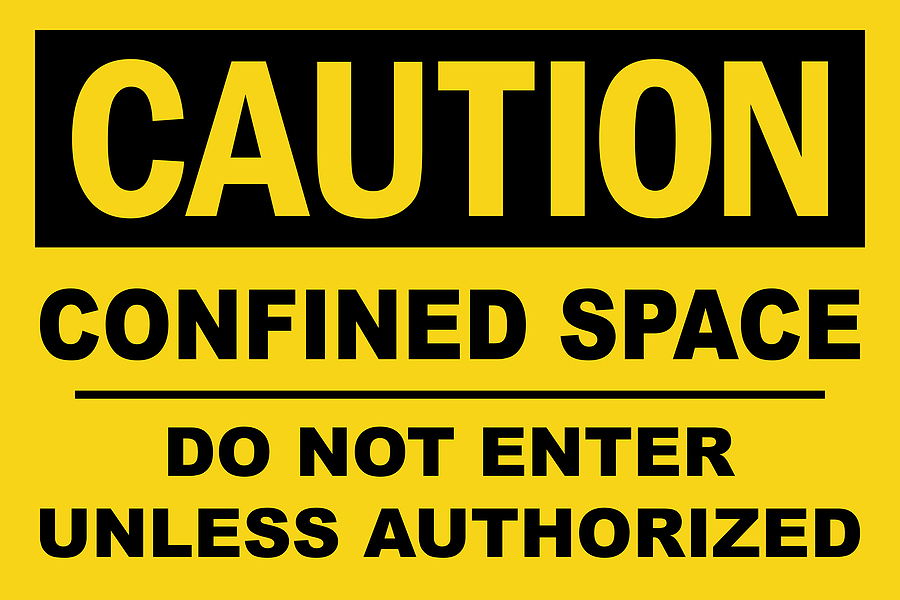How Confined Space Training Is Crucial to Workplace Safety

Going into a narrow space at work? Confined space training is what you need.
There are invisible hazards buried within such areas that can turn deadly in minutes. Know the basic confined space information and skills ahead of time. It will save your life and those of your colleagues.
So What Is a Confined Space?
We’ll start with the essentials. What is a confined space?
Any field at all that’s:
- Closed or partially closed
- Has a small entrance and exit gate.
- Does not allow permanent worker utilization.
A few of the most frequent ones are:
- Tanks
- Vessels
- Silos
- Storage bins
- Hoppers
- Vaults
- Pits
- Manholes
- Crawl spaces
- Pipelines
- Tunnels
- Utility vaults
Such rooms are really prevalent in a lot of areas such as construction, manufacturing, utilities, and the like.
Not always clearly hazardous either, often not. But their enclosed presence can conceal serious invisible threats.
The Undercover Risks of Detention Centres
Why are tight rooms so dangerous for humans?
No Ventilation
The small opening and size also makes for limited natural ventilation. Explosive fumes or vapors quickly build up to a toxic state.
Oxygen Shortness
Oxygen is removed from the process in the chamber. Air not more than 19.5% oxygen will not sustain life and consciousness.
Toxic Atmospheres
Gases or vapors such as methane, carbon monoxide, or hydrogen sulfide can leak or leak into the environment. They poison or strangle workers.
Explosive Hazards
Flammable gases, vapours or dust in the cage can startle with a spark. This leads to potentially fatal explosions or fires.
Engulfment Hazards
Flowed liquids or loose solids, such as grains or pellets, can surround and choke workers if released into the room.
Machine & Electrical Safety Incidents
Tools, pipes or exposed wires in enclosed areas can entrap, crush or electrocute workers.
Staying Matters
Falling objects can hit or land on employees in closed areas like pits.
Moist Stresses
Crowded spaces, inadequate lighting, sound, extreme temperatures and more can overtax the body and mind.
Why Confined Space Training Matters
Since there are so many ways workers can get injured or killed, specialised confined space training is vital.
For starters, it’s federally required by the Occupational Safety and Health Administration (OSHA). Their Permit-Required Confined Space Standard (29 CFR 1910.146) contains some of the required training provisions.
For workers, accidents in confined space can occur horribly quickly. A lurking danger could sweep workers aside in seconds.
Good confined space training equips employees with the knowledge and equipment to identify hazards and work safely. It gives you the training to stay safe and to react in a crisis.
No employee should enter a permit-dependent confined space without proper training. They’re life and death.
OSHA’s Training Standards to Understand
OSHA confined space guidelines require that all employees are trained to work in permit spaces.
This is both for the legally authorized visitors who are doing the job and for the attendants who keep an eye on it. OSHA also has other training obligations on the side of confined space supervisors that supervise entry.
Here are the most important things training should address under OSHA guidelines:
- How to identify permit vs. non-permit required confined spaces
- Hazards associated with confined spaces, including information about specific spaces
- Proper use of personal protective equipment (PPE)
- How to work safely in confined spaces through established procedures
- How to communicate with attendants as needed
- How to exit spaces quickly during emergencies
- Rescue procedures and services available if needed
Record keeping should show that workers were properly trained. Anytime, OSHA is entitled to demand such records.
Vital Confined Space Skills Learned Through Training
Not just ensuring compliance with OSHA regulations, confined space training teaches workers how to operate safely in the workplace.
The employees are taught to:
- Inspect spaces before entry using gas detectors and other instruments
- Continuously monitor conditions while working in the space
- Control hazards through proper ventilation and isolation techniques
- Use fall protection, respiratory gear, lighting, and other safety equipment
- Communicate effectively with entry supervisors and attendants
- Exit spaces swiftly if conditions deteriorate or emergencies occur
- Perform basic confined space rescues if necessary
These trainings enable employees to remain safe every minute that they spend in potentially dangerous permit spaces.
Disaster Recovery- Preparing for the Extreme.
With proper confined space training, workers are ready to face whatever happens.
They know what an emergency action plan would be if something happens. This comprises:
- Who should I call for assistance?
- How rescues will be handled
- Position of rescue equipment
- What are the rules for good first aid?
If something goes wrong, training helps workers stay calm and do not freak out. They know their position in the response plan and respond efficiently to provide assistance to injured colleagues.
Those emergency life-saving acts, when carried out by training, stop small wounds turning into catastrophic deaths.
Don’t Skip This Lifesaving Training!
Going into a work permit-necessary confined space? Don’t miss this training!
Confined spaces may look harmless, but can kill a quick death if you’re not ready. Viable threats such as dangerous gases, bombs and depleted oxygen exist within these mirages.
Get OSHA training in the confined spaces. Discover safety measures, safety gear, and emergency response to keep yourself safe. Those are the skills that will protect you and your colleagues from exposure in one of the most dangerous environments to work.
Back from work day alive and well.
Contact Safety Counselling for Confined Space Training today! Make sure to complete all of the confined space training before that next permit-entry. It might be the difference between you and death.
